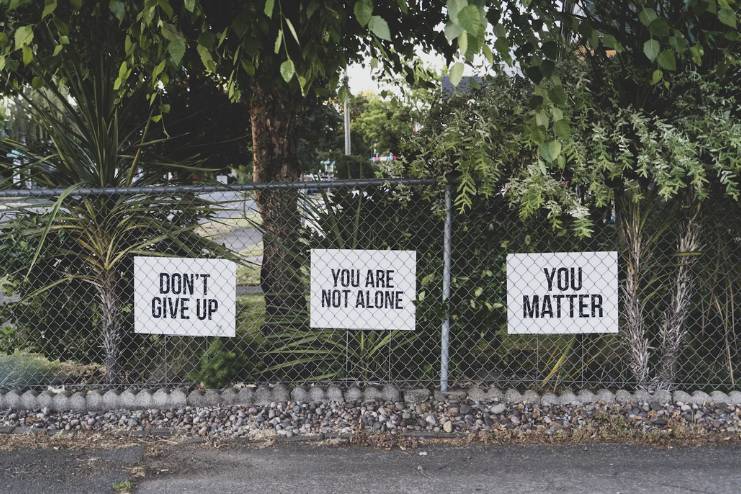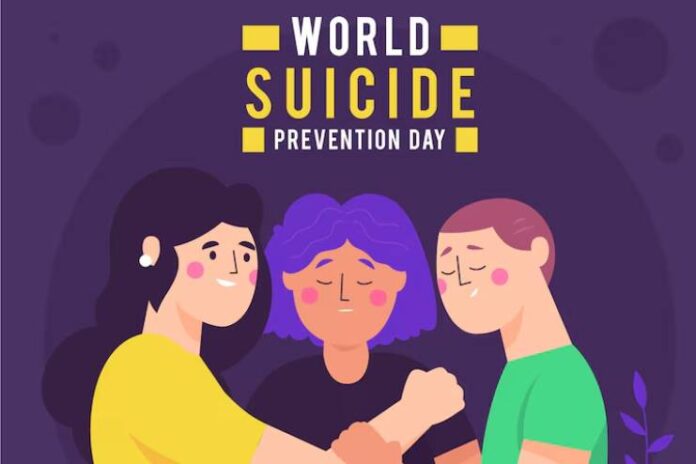Affiliate Disclaimer
Some links in this article are affiliate links. We may earn a small commission if you make a purchase through these links, at no extra cost to you. We only recommend products we find useful to our readersNational Suicide Prevention Week (NSPW) is observed every year during the second week of September. This year, it will be from September 8 to September 14. This is an awareness week for the prevention of suicide, reduction of stigma associated with mental health problems, and encouragement for proactive efforts to support individuals at risk.
NSPW is dedicated to raising public awareness of warning signs and risk factors in suicide. By doing this, it is expected that NSPW will create a society which is adequately educated and sensitive to warning signs to offer necessary help. It also intends to educate people on how precautionary measures can be taken in order to reduce the danger of suicide.
Importance of Suicide Prevention

Suicide is one of the major global problems. It not only has serious consequences for the individual involved, but also entails a high social cost. Approximately 800,000 people under the age of 70 take their own lives every year, which is one suicide every 40 seconds. It is among the leading causes of death in the United States. In 2020 alone, about 46,000 people ended their lives.
Impact on Families and Communities:
The impacts of suicide extend far beyond the one who has died. Family members and friends who have lost a loved one often undergo grief, confusion, and guilt. This loss could bring trauma to immediate family members, friends and colleagues.
It can cause emotional distress among community members, lead to further mental health issues, and create a sense of insecurity and loss. The impact also affects healthcare and support systems.
Understanding Suicide and Mental Health

What Leads to Suicide:
Suicide involves a mix of strong emotional dysregulation (emotional struggles) and cognitive errors (faulty thinking). Emotional dysregulation means having trouble controlling or handling emotions properly. Cognitive errors are wrong ways of thinking that make things seem hopeless.
When combined, these issues can make someone feel like they can’t tolerate their situation and see suicide as the only solution. Experts say that this is often a very brief but intense period where the decision to commit suicide is made.
Common Warning Signs:
Behavioral Signs:
- Withdrawal: Withdrawing from family and friends, social activities, or interacting with others.
- Risk-Taking: Intentional dangerous activities, such as reckless driving or using drugs.
- Giving Away Possessions: Giving away treasured possessions or saying good-bye as if preparing to die.
- Planning: Researching methods or making plans to end their life, such as searching for lethal means or preparing a will.
Verbal Signs:
- Expressions of Despair: Mentioning the wish to die, hopelessness, or believing there are no solutions to their problems.
- Being a Burden: Statements indicating they feel they are a burden to others.
- Emotional Pain: Talking about unbearable emotional or physical pain, feeling trapped, or having no reason to live.
Emotional Signs:
- Mood Swings: Feeling sunk into deep sadness and then suddenly becoming calm or even happy.
- Obsession with Death: Frequent conversations or thoughts about death, dying, or self-harm.
- Guilt and Shame: There is an overwhelming sense of guilt or shame.
Common Risk Factors:
- Psychological Factors: Presence of a psychiatric disorder, such as major depression, anxiety disorders, schizophrenia, or personality disorders, raises the risk.
- Situational Factors: Such critical situations as loss of job, marital problems, chronic illness, or sharp physical pain raise the risk.
- Social Factors: Isolation from social networks, lack of support, and exposure to suicide or sensationalized portrayals of suicide increase risk.
Recommended Articles: 10 Efficient Ways to Avoid Depression For Better Mental Peace
Steps for Suicide Prevention

Recognizing the Signs:
- Early Identification: The warning signs of suicide identify behavioral, verbal, and emotional signals. Early identification can be done by observing withdrawal from social interaction, drastic mood swings, or feelings of hopelessness.
- Behavioral Cues: Look for behavioral cues, such as giving away personal property, engaging in reckless behavior, or preparing to end their life.
- Verbal Cues: Statements that express a wish to die, feeling a burden, or intense emotional pain.
- Emotional Cues: Severe mood swings, obsessive death-related thoughts, guilt, and/or shame.
Intervening Early:
- Ask Directly: A question like, “Do you feel like killing yourself?” may be helpful. Confronting a person with a direct question about his intention to commit suicide provides an opportunity to start the conversation and let him/her know that you care and can listen.
- Be There: Offer an ear to the client’s situation without judgment. Your presence and acknowledgment of feelings can do so much in offering emotional support. Validation of experience and showing empathy, without providing immediate solutions, is important.
- Help Keep Them Safe: Take practical measures to decrease the risk of self-harm. Remove any means of self-harm such as firearms, medications, or other lethal items. Discuss and evaluate any plans they may have by taking steps to make the environment safer.
- Help Them Connect: Encourage the person to get professional help. The 988 Suicide & Crisis Lifeline can get them immediate help via call or text. Connect them to a mental health professional, a good friend, or a family member who can further help them.
- Follow Up: Continue support after the immediate crisis has passed. Regular follow-up provides ongoing reassurance and ensures a person does not become isolated.
The Role of Self-Care:
For patients with mild symptoms and/or low levels of distress, self-care can significantly improve mental health by preventing worsening symptoms. Examples of self-care activities that may be recommended include:
- Exercise: This can enhance one’s mood to enable good mental health. Benefits include the generation of endorphins, reducing the symptoms of depression and anxiety.
- Social Contact: It is about engaging in social activities, either virtually or in person, to stay out of isolation and get emotional support. In that respect, sustaining contact with friends and family may turn out to be a crucial determinant of emotional resilience.
- Healthy Eating and Sleep: A healthy diet and appropriate sleep form the foundation of mental health. Proper nutrition, combined with sufficient rest, helps to keep mood stable and usually improves general mental condition.
- Meditation and Mindfulness: Meditation practices, including relaxation techniques and mindfulness, reduce stress levels and maintain emotional stability in life.
Also, read:
- Suicide Attempts With Self Poisoning In Teens And Young Adults Doubled, New Study Suggests
- 10 Nutrition Myths Debunked: Separating Fact from Fiction
Resources for Help

National Suicide Prevention Lifeline (988):
The 988 Suicide & Crisis Lifeline is intended for individuals in emotional distress or suicidal crisis. It provides a confidential service around the clock and connects the caller immediately with a skilled counselor who can help a person in crisis. The main services include:
- Crisis Counseling: Trained counselors provide emotional support and counseling to people in immediate distress. They work with the caller to determine a resolution, reassure them that they are safe, and provide strategies to deal with the immediate crisis.
- Safety Planning: This is defined as the process of working with a consumer to get a personal safety plan that includes warning signs, coping strategies, and sources of support.
- Referrals and Resources: They also offer further resources through Lifeline, which include mental health services, community support, and follow-up care. They also let callers know about local services in their area and the way to access on-going support.
Mental Health Professionals:
Mental health professionals play an important role in therapy and the treatment of the problem. Some of the therapeutic options and various treatments include:
- Psychotherapy Options:
- Individual Therapy: One-on-one sessions are carried out by the licensed therapist, who lets individuals talk about themselves in private regarding their thoughts, feelings, and actions.
- Group Therapy: Group therapy is the atmosphere of sharing one’s experiences and learning from others’ experiences when there is a similar problem.
- Family Therapy: Basically, this is conducted for the working members within the family to help them resolve problems that plague the family unit.
- Medication:
- Role of Psychiatric Medications: The medications included for the purposes of severe symptoms associated with a disorder include antidepressants, mood stabilizers, and antipsychotics. Medications regulate brain chemistry so that the symptoms can be better managed and make the process of therapy and daily activities easier to handle.
- Brain Stimulation Therapies:
- Types and Uses: Types and Uses ECT and TMS are brain stimulation therapies used for people who have severe mental illness-especially major depressive disorder-or who cannot take antidepressant medication. These therapies may help relieve symptoms of depression, particularly in patients who have not responded to other treatments, by affecting activity in brain regions involved in mood control.
How to Observe National Suicide Prevention Week

Raising Awareness:
National Suicide Prevention Week (NSPW) is dedicated to bringing awareness around suicide prevention and the care of one’s mental health. Events in NSPW may take a wide variety of forms, including:
- Social Media Campaigns: Publish on social media platforms information about suicide prevention, resources for maintaining mental health, and personal stories. Use hashtags that will relate to NSPW to help connect to larger conversations while informing the public.
- Community Events: Plan and participate in local events like walks, rallies, or informational booths. Events raise awareness in the community, provide funds for mental health organizations.
- Educational Workshops: Organize or participate in workshops and seminars about mental health education, identification of warning signs, and intervention strategies.
Supporting Others:
Being present with someone who may be suicidal during NSPW and beyond is paramount:
- How to Be There: Let someone know you can understand and would listen without judgment. Reach out to friends or loved ones who might be at risk; directly ask how they’re feeling if you suspect they may be struggling.
- The Importance of Follow-Up: Follow-up care is important. Continue to check in with suicide thinkers and persons in crisis, encouraging them to get professional help if needed.
Promoting Mental Health:
Promoting mental wellness in individuals and communities is a key aspect of NSPW:
- Suggestions for Individuals: Engage in self-care activities such as exercise, healthy eating, and spending time with loved ones. Give attention to one’s mental health through therapy, if necessary, and the practice of mindfulness or stress management techniques.
- Community Tips: Create supportive environments by making mental health resources available, encouraging open discussions about mental health, and decreasing stigma associated with seeking help.
Conclusion
NSPW is there to support through awareness-raising activities, direct support to the needy, and community involvement to really help in preventing suicide and in promoting mental well-being. All efforts, be it social-media campaigns, community events, or just being there for a friend or loved one, make all the difference.
Remember, suicide prevention is everybody’s responsibility. Being informed, supportive, and advocating for mental health, we can create change both in an individual’s life and within the larger community. Let NSPW remind us of what we can do when compassion and dedication to mental health bring us all together.
References
- https://edition.cnn.com/2022/09/04/health/national-suicide-prevention-week-suicidal-signs-wellness/index.html
- https://www.nimh.nih.gov/health/publications/warning-signs-of-suicide
- https://www.nimh.nih.gov/health/publications/5-action-steps-to-help-someone-having-thoughts-of-suicide
- https://www.nimh.nih.gov/health/publications/tips-for-talking-with-your-health-care-provider
- https://www.nimh.nih.gov/health/publications/my-mental-health-do-i-need-help
- https://nationaltoday.com/suicide-prevention-week/
- https://www.nimh.nih.gov/health/topics/suicide-prevention
In this Article




















